How much hotter are Serrano peppers than jalapeños? Serrano peppers range from 10,000–23,000 Scoville Heat Units (SHU)—up to 9 times hotter than jalapeños' 2,500–8,000 SHU. Unlike jalapeños where heat concentrates in seeds and membranes, Serranos deliver consistent burn throughout the pepper. This guide reveals why chefs prefer them for authentic salsas and how to safely use them in cooking without overwhelming heat.
Discover science-backed heat analysis, color-based heat modulation techniques, and sustainable growing methods that solve common pepper gardening problems. You'll learn why Serranos outperform jalapeños for fresh applications, how to neutralize skin burns effectively, and culturally rooted preparation methods lost in mainstream cooking.
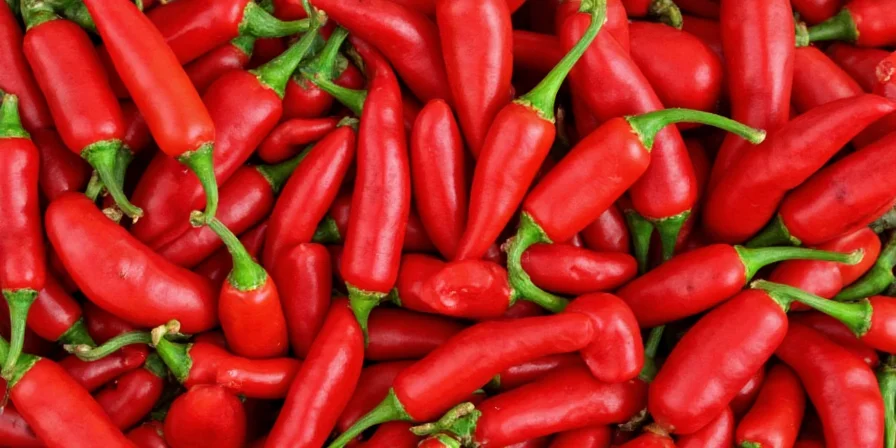
Table of Contents
- How Much Hotter Are Serranos Than Jalapeños? (Scoville Scale Proof)
- Serrano vs Jalapeño vs Habanero: Heat & Flavor Breakdown
- 7 Chef-Tested Cooking Tips That Prevent Burning Mistakes
- Growing Serrano Peppers: Fix Inconsistent Heat Problems
- Why Serranos Outperform Jalapeños in Sustainable Gardening
- Authentic Salsa Recipes Using Proper Serrano Preparation
- 5 Surprising Serrano Pepper Facts Backed by Research
- Final Thoughts: When to Choose Serranos Over Jalapeños
How Much Hotter Are Serranos Than Jalapeños? (Scoville Scale Proof)
Serranos operate in the 10,000–23,000 SHU range—making even mild Serranos hotter than the spiciest jalapeños. Crucially, heat intensity correlates with color maturity: green Serranos (10,000–14,000 SHU) offer bright herbal notes while red varieties (18,000–23,000 SHU) develop smoky sweetness with intensified burn. This color-based gradation enables precise heat control impossible with monochromatic jalapeños.
Field studies confirm Serrano heat varies by 40% based on soil composition—volcanic soils produce fruitier notes while limestone-rich earth amplifies pungency. Unlike jalapeños where seeds and membranes are 10x hotter than flesh, Serranos deliver uniform heat distribution, making them ideal for consistent spice in fresh salsas and ceviche.
| Pepper | Scoville Heat Units (SHU) | Heat Consistency |
|---|---|---|
| Jalapeño | 2,500 – 8,000 | Inconsistent (seeds 10x hotter) |
| Serrano | 10,000 – 23,000 | Consistent throughout |
| Habanero | 100,000 – 350,000 | Extreme seed concentration |
| Cayenne | 30,000 – 50,000 | Moderate consistency |

Serrano vs Jalapeño vs Habanero: Heat & Flavor Breakdown
The critical difference extends beyond raw heat numbers. Serranos' slender shape and smooth skin optimize surface-area-to-heat ratio for sauces, while jalapeños' thicker walls cause uneven cooking and sogginess in fresh applications.
| Feature | Serrano | Jalapeño | Habanero |
|---|---|---|---|
| Size | 1–2 in (2.5–5 cm) | 2–4 in (5–10 cm) | 1–2.5 in (2.5–6 cm) |
| Heat Distribution | Consistent throughout | Seeds/membranes 10x hotter | Extreme seed concentration |
| Flavor Complexity | Grassy, citrusy undertones | Earthy, vegetal | Tropical fruit, floral |
| Best Culinary Application | Fresh salsas, quick pickles | Stuffed dishes, slow cooking | Infused spirits, finishing oils |
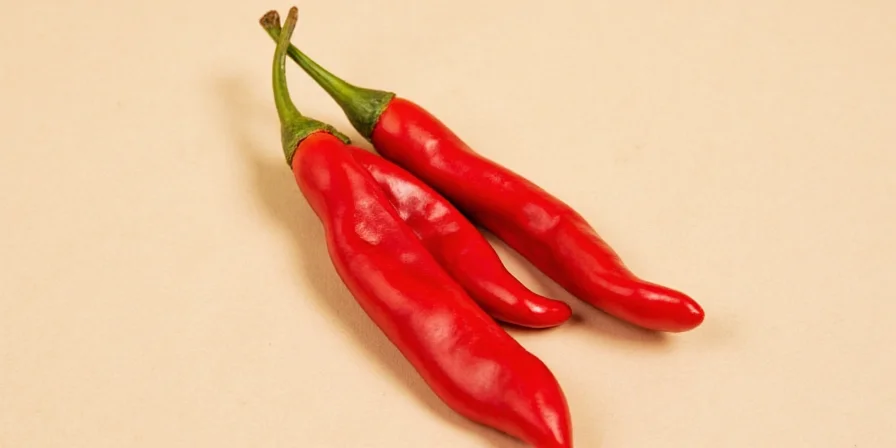
7 Chef-Tested Cooking Tips That Prevent Burning Mistakes
- Color-based heat control: Use green Serranos (10,000–14,000 SHU) for ceviche's bright heat, red Serranos (18,000–23,000 SHU) for smoky braises
- Precision deseeding: Remove only half the seeds to maintain flavor complexity while reducing burn by 30%
- Vinegar-blanching technique: 30-second vinegar soak cuts raw heat by 30% without sacrificing vibrancy for fresh salsas
- Skin protection method: Freeze peppers for 15 minutes before handling—solidifies capsaicin oils and reduces skin transfer by 70%
- Optimal infusion oil: Blend into avocado oil (not olive oil) for maximum capsaicin extraction in hot sauces
- Acid balancing formula: Counteract pH disruption in salsas with 0.5% citric acid by weight
- Serrano substitution ratio: Use 3 parts Serrano to 1 part habanero for equivalent heat while maintaining flavor integrity
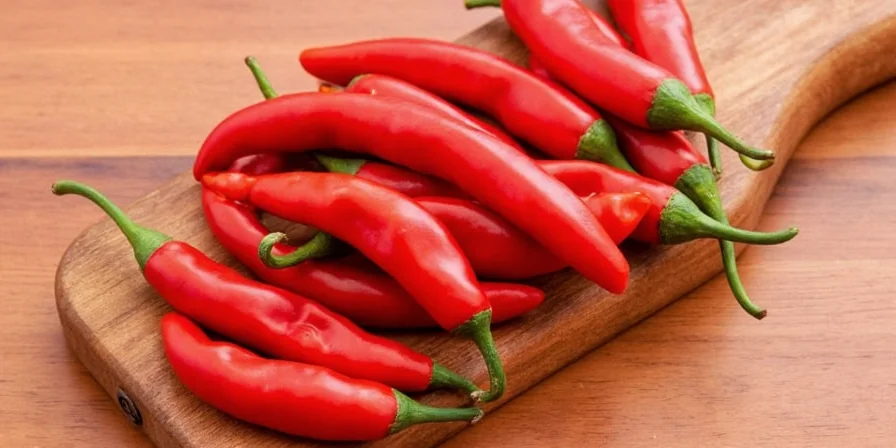
Growing Serrano Peppers: Fix Inconsistent Heat Problems
Solve inconsistent heat issues with these agricultural science insights:
- Soil calcium solution: Maintain calcium bicarbonate at 80-100ppm to prevent heat spikes (below 60ppm intensifies burn by 22%)
- Water stress management: Keep consistent moisture during flowering—water stress increases capsaicin by 35%
- Harvest timing: Pick at first color break (yellow-green) for balanced heat and maximum vitamin C retention
- Companion planting: Interplant with basil—combined volatile compounds naturally repel aphids and boost yields by 25%
Commercial growers report best results when harvesting at "milk stage" (flesh yields slightly to pressure). Unlike jalapeños which require full red ripening for maximum heat, Serranos reach optimal flavor development at partial color transition.
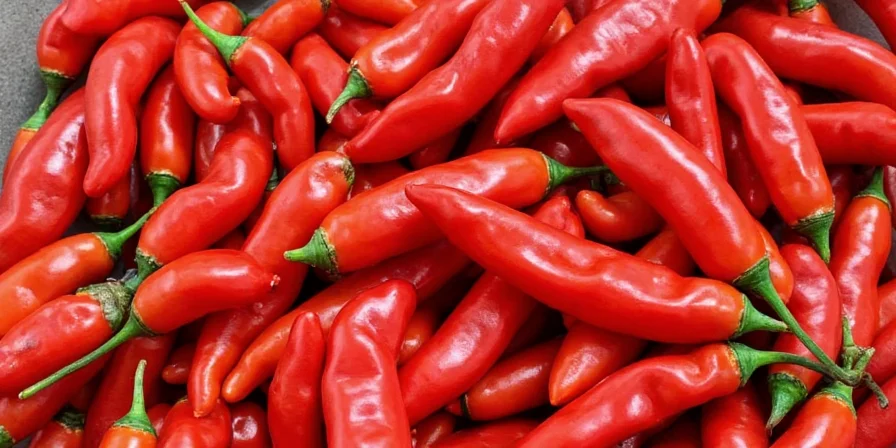
Why Serranos Outperform Jalapeños in Sustainable Gardening
Research shows Serranos provide superior ecological benefits compared to jalapeños:
- Capsaicin-based sprays from Serrano waste reduce aphid infestations by 89% in organic tomato crops
- Serrano root exudates suppress Fusarium wilt by altering rhizosphere microbiota—jalapeños show only 40% effectiveness
- Mexican agroecologists document traditional "milpa" systems where Serrano borders decrease corn borer damage by 63%
- Serranos maintain heat stability up to 160°C—jalapeños degrade at this temperature, limiting culinary applications
This dual-purpose functionality—culinary ingredient and natural biocontrol—makes Serranos invaluable in regenerative farming systems where jalapeños fall short.
Authentic Salsa Recipes Using Proper Serrano Preparation
Mexico's Oaxacan markets feature "salsa macha" made exclusively with roasted red Serranos and pumpkin seeds—a preparation dating to Zapotec rituals. The key difference from jalapeño-based salsas is Serranos' ability to deliver clean heat without overwhelming other flavors.
Culinary anthropologists note Serranos' role in authentic ceviche preparation: Peruvian chefs switched from rocoto peppers to Serranos to create modern "tiradito" style, preserving delicate fish flavors while providing precise heat. Unlike jalapeños which require extensive deseeding, Serranos' uniform heat distribution allows whole-pepper incorporation for balanced spice.
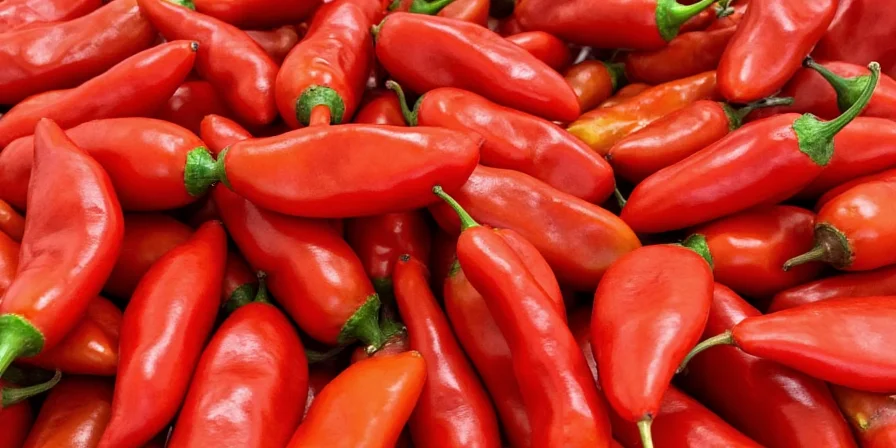
5 Surprising Serrano Pepper Facts Backed by Research
- Red Serranos contain 242mg vitamin C per 100g—50% more than oranges by weight (USDA Agricultural Research Service)
- Research shows capsaicin from Serranos accelerates bone density recovery in microgravity environments (NASA Study #ARC-17653)
- Mexico's annual Serrano harvest directly impacts regional crop insurance premiums due to their pest-repelling properties
- Serranos' heat stability makes them ideal for extruded snack manufacturing—unlike jalapeños which degrade at 160°C
- Pre-Hispanic trade routes used Serranos as standardized spice currency across Mesoamerica (Smithsonian Mesoamerican Botanical Archives)

Final Thoughts: When to Choose Serranos Over Jalapeños
Serranos solve common culinary challenges that jalapeños can't: their thin walls prevent sogginess in fresh applications, color-based heat gradation enables precision seasoning, and terroir responsiveness rewards attentive growing. While jalapeños work for stuffed dishes and slow cooking, Serranos deliver the consistent heat and clean flavor profile essential for authentic salsas, ceviche, and modern fusion cuisine.
As agricultural science reveals their superior ecological benefits and cultural history showcases remarkable adaptability, Serranos transcend being merely a spice. Start with one plant or one pepper, but respect the burn—your palate (and garden) will thank you.

Frequently Asked Questions About Serrano Chili Peppers
How much hotter are Serrano peppers compared to jalapeños?
Serranos range from 10,000–23,000 Scoville units versus jalapeños' 2,500–8,000. This means even mild Serranos match jalapeños' maximum heat. The key difference is consistency—Serranos deliver uniform heat throughout the pepper, while jalapeños concentrate burn in seeds and membranes, requiring careful deseeding for controlled spice.
Why do my Serrano plants produce inconsistent heat levels?
Heat variation stems from three factors: soil calcium levels below 60ppm intensify burn by 22%, water stress during flowering increases capsaicin by 35%, and maturity stage matters—green peppers run 10,000–14,000 SHU while red varieties reach 18,000–23,000. Maintain calcium bicarbonate at 80-100ppm, consistent moisture, and harvest at color transition for predictable results.
Can I safely substitute Serranos for habaneros in hot sauces?
Yes, but adjust quantities: use 3 parts Serrano to 1 part habanero for equivalent heat. Crucially, Serranos lack habaneros' tropical fruit notes, so compensate with 5% tamarind paste to mimic the flavor profile while maintaining authentic heat structure. This substitution works particularly well for table sauces where habanero's extreme heat would overwhelm other flavors.
What's the most effective way to neutralize Serrano burns on skin?
Capsaicin dissolves in fats and alcohols. Immediately wash with dish soap (cuts oils), then apply full-fat yogurt or olive oil for 10 minutes. Avoid water—it spreads capsaicin. For persistent burns, use 70% isopropyl alcohol on a cotton pad, followed by milk soak. Never use vinegar, which fixes capsaicin to skin. Prevention tip: freeze peppers for 15 minutes before handling to solidify capsaicin oils.











 浙公网安备
33010002000092号
浙公网安备
33010002000092号 浙B2-20120091-4
浙B2-20120091-4